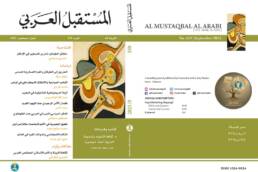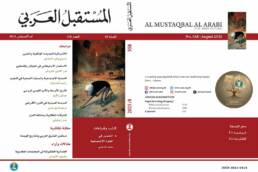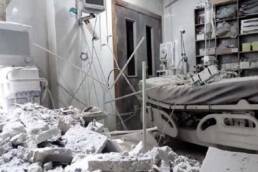المصادر:
(*) نُشرت هذه الدراسة في مجلة المستقبل العربي العدد 413 في تموز/يوليو 2013.
(**) جاد ملكي: مدير قسم الصحافة والإعلام في الجامعة الأميركية في بيروت.
البريد الإلكتروني: jm39@aub.edu.lb
(***) أمل ديب: أستاذة الإعلام والاتصال، جامعة البلمند.
البريد الإلكتروني: amal.dib@gmail.com
[1] «Lebanon: The Winograd Report in Full,» The Independent, 31/1/2008, <http://www. independent.co.uk/news/world/middle-east/lebanon-the-winograd-report-in-full-776000.html>.
[2] Marvin Kalb and Carol Saivetz, «The Israel-Hezbollah War of 2006: The Media as a Weapon in Asymmetrical Conflict,» International Journal of Press/Politics, vol. 12, no. 3 (2007), pp. 43-66.
[3] Pierre Cyril Pahlavi, «The 33-Day War: An Example of Psychological Warfare in the Information Age,» Canadian Army Journal, vol. 10, no. 2 (2007), pp. 12-24.
[4] Leslie A. Rill and Corey B. Davis, «Testing the Second Level of Agenda Setting: Effects of News Frames on Reader-assigned Attributes of Hezbollah and Israel in the 2006 War in Lebanon,» Journalism and Mass Communication Quarterly, vol. 85, no. 3 (2008), pp. 609-624.
[5] Kalb and Saivetz, «The Israel-Hezbollah War of 2006: The Media as a Weapon in Asymmetrical Conflict,» p. 43.
[6] Ivor Gaber, E. Seymour and Lisa Thomas, «Is the BBC Biased?: The Corporation and the Coverage of the 2006 Israeli-Hezbollah War,» Journalism, vol. 10, no. 2 (2009), pp. 239-259.
[7] Amy Goodman, «Is America Watching a Different War?,» Democracy Now (2006), <http://www. democracynow.org/2006/8/3/is_america_watching_a_different_war>.
[8] Franklin Lamb, «Fact-checking Marvin Kalb: Counterpunch,» Counterpunch (2007), <http://www.counterpunch.org/2007/05/05/harvard-s-twisted-report-on-israel-s-invasion-of-lebanon/>.
[9] Edward Herman and Noam Chomsky, Manufacturing Consent: The Political Economy of the Mass Media (New York: Pantheon Books, 2002).
[10] Robert D. Novak, «Pass for Israel from Mainstream American Media and Congress,» Washington Report on Middle East Affairs, vol. 25, no. 7 (2006), <http://www.wrmea.org>.
[11] Marwan Kraidy and Joe F. Khalil, Arab Television Industries (London: Palgrave Macmillan, 2009).
[12] Erving Goffman, Frame Analysis: An Essay on the Organization of Experience (Cambridge, MA: Harvard University Press, 1974).
[13] Paul D’Angelo, «News Framing as a Multiparadigmatic Research Program: A Response to Entman,» Journal of Communication, vol. 52, no. 4 (2002), pp. 870-888.
[14] Robert M. Entman, «Framing: Toward Clarification of a Fractured Paradigm,» Journal of Communication, vol. 43, no. 4 (1993), pp. 51-58.
[15] William Gamson and Andre Modigliani, «Media Discourse and Public Opinion on Nuclear Power: A Constructivist Approach,» American Journal of Sociology, vol. 95, no. 1 (1989).
[16] المصدر نفسه، ص 3.
[17] Pippa Norris, Montague Kern and Marion Just, Framing Terrorism: The News Media, the Government, and the Public (New York: Routledge, 2003).
[18] Charles Whitney, Randall Sumpter and Denis McQuail, «News Media Production: Individuals, Organizations, and Institutions,» in: Denis McQuail, Philip Schlesinger and Ellen Wartella, eds., The SAGE Handbook of Media Studies (Thousand Oaks, CA: Sage Publication, 2004), p. 405.
[19] Norris, Kern and Just, Ibid.
[20] Whitney, Sumpter and McQuail, Ibid., p. 405.
[21] D. Dor [et al.], War to the Last Moment: The Israeli Media in the Second Lebanon War (Jerusalem: Keshev, 2007), p. 69.
[22] Motti Neiger, Eyal Zandberg and Oren Meyers, «Communication Critique: Toward a Conceptualization of Journalistic Criticism,» Communication, Culture and Critique, vol. 3, no. 3 (2010).
[23] المصدر نفسه، ص 391.
[24] Dalia Gavriely-Nuri and Tiki Balas, «Annihilating Framing’: How Israeli Television Framed Wounded Soldiers during the Second Lebanon War,» Journalism, vol. 11, no. 4 (2010), pp. 409-423.
[25] المصدر نفسه.
[26] Babak Bahador, «Framing the 2006 Israel-Hezbollah war?: Proceedings from ISA 2008: Annual Meeting of the International Studies Association,» School of Political Science and Communication, University of Canterbury (2008).
[27] Brooke Mascagni, «Evoking Fear and Suffering in Photojournalism: The 2006 Israeli-Hizbullah War,» paper presented at: The Annual Meeting of Western Political Science Association, University of California at Santa Barbara (2008).
[28] Amnon Cavari and Itay Gabay, «Foreign Affairs and the Local Newsroom: Local Television News Coverage of the 2006 Lebanon War,» Proceedings from: American Politics Workshop, University of Wisconsin-Madison (2010).
[29] المصدر نفسه، ص 18.
[30] Gaber, Seymour and Thomas, «Is the BBC Biased?: The Corporation and the Coverage of the 2006 Israeli-Hezbollah War».
[31] المصدر نفسه، ص 239.
[32] Katy Parry, «A Visual Framing Analysis of British Press Photography during the 2006 Israel-Lebanon Conflict,» Media, War and Conflict, vol. 3, no. 1 (2010), pp. 67-85.
[33] المصدر نفسه، ص 80.
[34] أ. كامل، «المعالجة الصحفية للحرب الإسرائيلية على لبنان 2006،» ورقة قُدِّمَت إلى: مؤتمر تداعيات الحرب الإسرائيلية ـ اللبنانية على مستقبل الشرق الأوسط، في جامعة القاهرة (2006).
[35] هناء كامل أبو العينين، الخطاب الإعلامي في الحرب اللبنانية ـ الإسرائيلية سنة 2006 «مع ملحق بالمقالات الصحفية العربية والإسرائيلية وخطابات نصر الله وأولمرت»، تقديم إيمان السعيد جلال (القاهرة: مكتبة الآداب للطباعة والنشر والتوزيع، 2011).
[36] م. العبد الله، «استخدام الصورة في تغطية العدوان الإسرائيلي على لبنان (حرب تمّوز 2006)،» ورقة قُدِّمَت إلى: مؤتمر «ثقافة الصورة» في جامعة فيلادلفيا، عمّان (2007).
[37] وليد العمري، «قناة الجزيرة في الحرب الإسرائيلية السادسة،» مجلّة الدراسات الفلسطينية، السنة 17، العدد 68 (2006)، ص 113 ـ 119.
[38] Kalb and Saivetz, «The Israel-Hezbollah War of 2006: The Media as a Weapon in Asymmetrical Conflict».
[39] المصدر نفسه، ص 50.
[40] Roland Schatz and Christian Kolmer, The Portrayal of War in the Middle East: Media Analysis of News Coverage by ARD and ZDF (Hamburg: Media Tenor, 2006).
[41] Mahdi Yaghoobi, «A Critical Discourse Analysis of the Selected Iranian and American Printed Media on the Representations of Hizbullah-Israel War,» Journal of Intercultural Communication, vol. 21 (2009), <http://www.immi.se/intercultural/nr21/yaghoobi.htm>.
[42] Paula M. Poindexter and Maxwell E. McCombs, Research in Mass Communication: A Practical Guide (Boston, MA: Bedford Saint Martin’s, 1999), p. 188.
[43] Dan Riff, Analyzing Media Messages: Using Quantitative Content Analysis in Research (Philadelphia, PA: Lawrence Erlbaum Associates, 2005).
[44] Kalb and Saivetz, «The Israel-Hezbollah War of 2006: The Media as a Weapon in Asymmetrical Conflict,» p. 50.
[45] Regina Lawrence, «Researching Political News Framing: Established Ground and New Horizons,» in: Paul D’Angelo and Jim A. Kuypers, eds., Doing News Framing Analysis: Empirical and Theoretical Perspectives (New York: Routledge, 2010), p. 267.
[46] Stephen Reese, «Finding Frames in a Web of Culture: The Case of the War on Terro,» in: Paul D’Angelo and Jim A. Kuypers, eds., Doing News Framing Analysis: Empirical and Theoretical Perspectives (New York: Routledge, 2010), pp. 18-19.
[47] Herman and Chomsky, Manufacturing Consent: The Political Economy of the Mass Media.
[48] المصدر نفسه، ص 2.
[49] Lawrence, «Researching Political News Framing: Established Ground and New Horizons».
[50] المصدر نفسه، ص 267.
بدعمكم نستمر
إدعم مركز دراسات الوحدة العربية
ينتظر المركز من أصدقائه وقرائه ومحبِّيه في هذه المرحلة الوقوف إلى جانبه من خلال طلب منشوراته وتسديد ثمنها بالعملة الصعبة نقداً، أو حتى تقديم بعض التبرعات النقدية لتعزيز قدرته على الصمود والاستمرار في مسيرته العلمية والبحثية المستقلة والموضوعية والملتزمة بقضايا الأرض والإنسان في مختلف أرجاء الوطن العربي.



